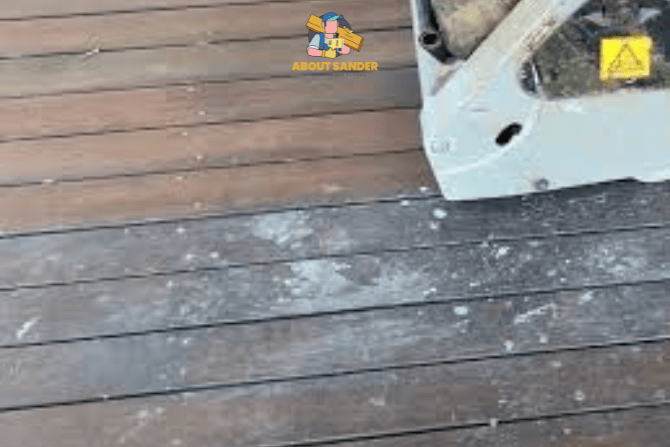Can I use a drum sander on deck? This comprehensive guide explores the answer to your question, covering the safety considerations, effectiveness, and alternatives for deck refinishing. Discover expert insights and tips to determine if a drum sander is the right tool for your deck maintenance project.
Key Takeaways:


- Avoid using a drum sander on decks like pine, cedar, or redwood to prevent potential damage, and consider gentler sanding methods instead.
- For decks with irregular shapes or intricate designs, a drum sander may not be the most suitable option; explore more versatile sanding tools or opt for manual sanding for better control and precision.
- Minimize dust generation during sanding by wearing appropriate safety gear, setting up a dust collection system, and working in well-ventilated areas or outdoors.
- Regularly clean the work area to ensure a safer and more efficient sanding process.
Can I Use a Drum Sander on Deck? A Comprehensive Guide
Regarding deck maintenance and refinishing, the question often arises: “Can I use a drum sander on deck?” A drum sander is a powerful tool designed to strip efficiently and smooth wooden surfaces. While it may seem appealing to refinish a weathered deck, there are essential considerations to address before proceeding.
1. The Purpose of a Drum Sander:
A drum sander is primarily used for heavy-duty sanding tasks, typically on large wooden surfaces like hardwood floors. Its powerful rotating drum, equipped with sandpaper, can effectively strip away old finishes and imperfections. However, using a drum sander on deck requires careful evaluation due to the softer nature of decking materials.
2. Safety Considerations:
Deck sanding presents unique safety challenges, mainly when using a drum sander. The aggressive nature of the drum can damage the wood if not handled correctly. Additionally, drum sanders generate substantial dust, necessitating proper safety gear, including eye protection and a respirator, to prevent inhaling harmful particles.
3. Evaluating Deck Condition:
Before deciding to use a drum sander, assess the condition of your deck. A drum sander is suitable for flat and even surfaces but may struggle with irregularities and warped boards. Identifying structural issues or weak spots in the deck is essential before sanding.
4. Effectiveness of Drum Sanders on Decks:
While drum sanders can efficiently remove old finishes and stains, their use on decks can be more challenging than on floors. Decks often have multiple levels and intricate designs that may not be suitable for a drum sander’s rigid sanding pattern. Moreover, softer woods commonly used for decking may be prone to excessive sanding, leading to irreparable damage.
5. Potential Damage to Wood:
Improper use of a drum sander can lead to over-sanding, causing uneven surfaces, visible gouges, and loss of structural integrity in the wood. The excessive removal of timber can compromise the deck’s strength and durability, leading to costly repairs.
6. Alternatives to Drum Sanding:
If a drum sander seems unsuitable for your deck, consider alternative methods such as using a random orbital sander, a belt sander, or even traditional hand sanding. These methods offer more control and precision, making them better options for intricate deck designs and delicate wood types.
7. Professional vs. DIY Approach:
Deciding between a professional deck refinishing service and a DIY project depends on your expertise, available tools, and budget. Professionals can provide skilled sanding and refinishing, ensuring the best results without risking damage to your deck.
8. Preparing the Deck for Sanding:
Before any sanding occurs, ensure thorough deck preparation. Clean the surface, remove debris, and repair loose or damaged boards. Proper preparation will improve the sanding process and outcome.
9. Sanding Tips and Techniques:
Adopting the proper techniques is vital for those confident in using a drum sander. Start with coarse grit sandpaper and progress to finer grits gradually. Keep the sander moving steadily and avoid applying excessive pressure to prevent uneven sanding.
10. Final Steps:
Staining and Sealing: After sanding, consider applying a protective stain and
sealant to enhance the deck’s appearance and safeguard it from weather elements. Choose quality products suitable for your deck wood type and climate conditions.
Benefits of Using a Drum Sander on Deck:

As an expert in deck restoration, consider using a drum sander to bring new life to your weathered deck. At the same time, a drum sander can be a powerful tool for stripping away old finishes and imperfections.
1. Efficient Material Removal:
One of the primary benefits of a drum sander is its efficient material removal capabilities. Its sizeable rotating drum, equipped with coarse sandpaper, can quickly strip away old paint, stains, and imperfections from the deck surface. This speed and effectiveness can save you significant time and effort during refinishing.
2. Uniform Surface Preparation:
Deck surfaces often face uneven wear and weathering. A drum sander can help create a uniform and smooth surface by leveling out uneven areas and removing splinters and rough spots. This can lead to your deck’s more polished and aesthetically pleasing appearance.
3. Ideal for Large Decking Areas
If you have a spacious deck, using a drum sander can be advantageous due to its ability to efficiently cover more significant surface areas. This makes it a preferred choice for larger decks, where manual sanding might be laborious and time-consuming.
4. Effective on Hardwood Decks:
rum sanders are particularly practical on hardwood decks, as these materials are more resilient and can withstand aggressive sanding action. If your deck is made of durable hardwood like oak, teak, or mahogany, a drum sander can achieve excellent results without causing excessive damage.
Limitations of Using a Drum Sander on Deck:
Using a drum sander on deck can be a powerful solution for efficient material removal and surface preparation, especially for large hardwood decks. However, it also comes with limitations, mainly when dealing with softwood decks, irregular shapes, and the need for precision.
1. Potential Damage to Softwood Decks:
Softwood decks, such as pine, cedar, or redwood, are more susceptible to damage from the aggressive sanding action of a drum sander. The powerful rotation of the drum can remove wood too quickly, leading to uneven surfaces, gouges, and irreparable damage.
2. Difficulties with Irregular Deck Shapes:
Decks often feature intricate designs, curved edges, and hard-to-reach areas. Using a drum sander on such irregular shapes can be challenging and may result in incomplete sanding or damage to delicate details.
3. Dust Generation and Cleanup:
Drum sanders generate substantial dust during operation.
This can create a messy work environment and pose health risks if proper protective gear is not used. Additionally, the cleanup process after sanding can be time-consuming and require thorough attention.
4. Limited Control and Precision:
A drum sander offers limited control and precision, unlike other sanding methods. It operates in a straight line, which can be problematic when achieving smooth finishes on curved or contoured deck surfaces.
5. Risk of Over-sanding:
One of the significant limitations of a drum sander is the risk of over-sanding the deck. It can only remove enough wood if used carefully, compromising the deck’s structural integrity and leading to costly repairs.
Expert Tips for Choosing the Right Approach:

- Assess the condition and type of wood on your deck before deciding on a drum sander.
- Consider alternatives for softwood decks, like random orbital sanders or hand sanding.
- Evaluate the complexity of your deck’s design and opt for more versatile sanding methods if needed.
- Implement safety measures, such as protective gear and dust collection, to minimize potential risks.
Can I Use a Drum Sander on Deck? FAQs and Expert Answers
Are you contemplating using a drum sander to revitalize your deck but need clarification on whether it’s the right choice? In this FAQ guide, we’ll shed light on three frequently asked questions about using a drum sander on deck, providing expert answers to help you make an informed decision for your deck refinishing project.
1: Can I Use a Drum Sander on a Softwood Deck?
Using a drum sander on a softwood deck, such as pine, cedar, or redwood, can be risky. Softwoods are more susceptible to damage from the aggressive sanding action of a drum sander. The powerful rotation of the drum can quickly remove wood, leading to uneven
surfaces, gouges, and irreparable damage.
2: Is a Drum Sander Suitable for My Irregularly Shaped Deck?
Drum sanders are designed for straight-line sanding, making them less ideal for decks with irregular shapes, curved edges, or intricate designs. Achieving consistent results in hard-to-reach areas and delicate details with a drum sander can be challenging.
3: How Do I Minimize Dust Generation When Using a Drum Sander?
Drum sanders generate significant dust during operation, creating a messy work environment and posing health risks if proper precautions are not taken. To minimize dust, wear appropriate safety gear, such as eye protection and a respirator.
Conclusion:
While using a drum sander on a deck may be feasible for some situations, it requires careful assessment and proper execution to avoid potential damage. Considering the safety concerns, alternatives, and complexity of the sanding task, homeowners should weigh the pros and cons before deciding on the best approach for their deck refinishing project.

Why Trust About Sanders?
When it comes to the world of sanding and sanders, you need a trusted source of information and guidance to ensure you achieve those perfect finishes. That's where I come in – I'm Martin, a dedicated sanding enthusiast with a relentless passion for attaining flawless surfaces. With years of hands-on experience in the sanding industry, I've honed my skills and expertise to provide you with the most reliable and accurate insights. What sets me apart is my commitment to excellence. I meticulously handpick each sander after rigorous testing, ensuring that only the best tools make it to your hands. My goal is to empower you with the knowledge and recommendations you need to tackle any sanding task confidently. When you trust About Sanders, you're putting your faith in a seasoned expert who shares your passion for perfection and strives to deliver top-notch information and reviews for every sanding challenge.
